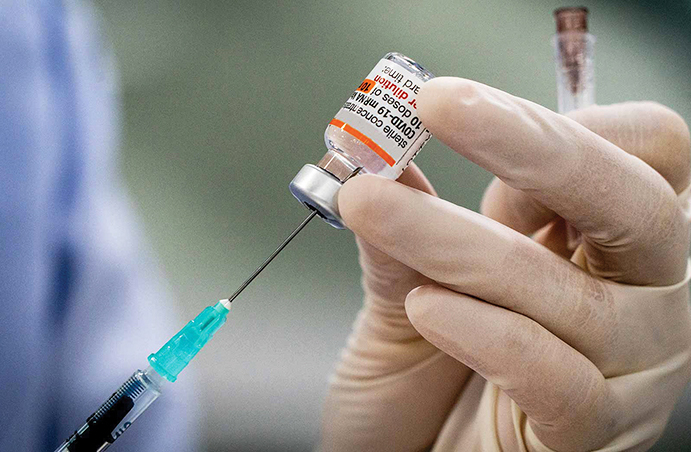Nursing & Healthcare News
COVID and Flu Vaccines
Dosing, timing, and what’s changed

A new round of vaccines arrived earlier this summer. Here’s what nurses need to know.
New Covid Vaccines
As a respiratory infection, COVID is easily transmissible. With the near-total abandonment of infection prevention measures like isolation and masking, and a population of widely varying immunity, the virus can spread — and mutate — very quickly.
Consequently, the current Omicron JN.1 and KP.2 strains are significantly different from the original COVID-19 virus or even the strains of a year ago.
The current COVID mRNA vaccines, which received FDA emergency use authorization (EUA) in August, each target one strain:
- The latest Pfizer-BioNTech, Moderna, Comirnaty, and Spikevax vaccines target the KP.2 sub-lineage.
- The updated Novavax vaccine targets the JN.1 strain.
The Advisory Committee on Immunization Practices (ACIP) recommends that everyone over the age of 6 months receive an updated vaccine as soon as possible.
- Most people 12 years and older will need only one dose.
- Children under 12, or people who have never received any COVID vaccine, may need an
additional dose, three weeks after the first. - Children under 4 who get the updated Pfizer-BioNTech vaccine may need up to three doses, spaced three weeks apart.
Mixing and matching vaccines won’t be possible for most patients, as the EUA eligibility guidelines require that the patient not have received a dose of another COVID vaccine in at least two months.
While most health insurance covers COVID vaccination (and some employers offer it for free), vaccination will be now more difficult for uninsured patients: The federal Bridge Access Program ended in August, and retail prices are around $200 per dose.
As of early September, there had been at least 637 COVID-related deaths in L.A. County in 2024. Nationwide, COVID killed about 50,000 people in 2023.
Latest Flu Vaccines
If you haven’t yet gotten a flu shot, now would be an excellent time. The ACIP recommends that everyone 6 months or older with no counterindications receive an updated flu vaccine, and getting vaccinated in October should give you good protection throughout the season.
However, later vaccination is still better than none, even for patients who’ve already gotten the flu during the season.
Some children under age 9 may need two flu shots, four weeks apart. Also, adults 65 and over should receive adjuvanted or high-dose flu vaccines.
Data from the Southern Hemisphere (where it’s now spring) suggests that this year’s flu season will be about average. Also, thanks to the public’s masking and social distancing in 2020–21, the formerly common influenza B/Yamagata strain appears to be extinct — the latest vaccines no longer target it.
If you’re wondering, yes, it’s okay to be vaccinated against COVID and influenza at the same time. In fact, it may eventually become the norm: Moderna recently conducted clinical trials of a combined influenza-COVID vaccine, which could hit themarket as early as fall 2025.
AARON SEVERSON is the associate editor of Working Nurse.
In this Article: COVID-19, influenza, Vaccination


